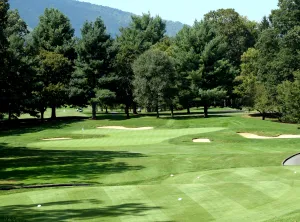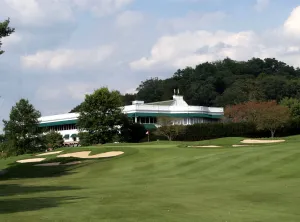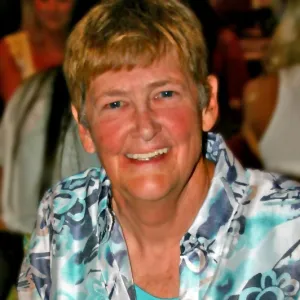America’s Resort, the Inimitable Greenbrier

West Virginia’s Greenbrier Resort is consistently ranked as one of the best resorts in the world, and few who have experienced the place would argue with that assessment. The resort staff accepts accolades with Southern-style humility. They’re accustomed to praise, including grand titles such as “Best Resort in the U.S.†and “Resort of the Century†bestowed by Harpers’ Hideaway Report. The Greenbrier has been serving guests since 1778, employing generations of staff members from the quiet town of White Sulphur Springs. Politeness and genuine hospitality seem to be inherited traits for the men and women in uniform.
Almost every U.S. president who plays golf has played at the Greenbrier, which has three world-class layouts. Most of the world’s top golfers have been here, too, dating back to World War I, when Bobby Jones and his contemporaries played in Red Cross fundraisers hosted by the resort.
One golfing icon who made an indelible mark on the Greenbrier was Sam Snead, who died in May 2002. The resort’s golf pro emeritus since 1993, Snead was a familiar figure on the driving range or at the Sam Snead Golf Academy, dispensing homespun wisdom and demonstrating his own skills. Or riding around the courses with his dog perched beside him in the cart. But, says VP of Golf Robert Harris, Snead left enough stories to keep guests laughing for generations to come.

Sam’s stories are part of the Greenbrier’s considerable golf legacy, and it is not without a certain awe that most golfers tee it up on Sam’s favorite, the par 70, 7,246-yard Old White Course. Opened in 1913 (when Sam was a year old), the Old White was designed by the most famous architect of the day, Charles Blair Macdonald, who modeled several holes after legendary European holes. The course has been through a lot, having hosted the PGA TOUR Greenbrier Classic 2010-2015 before it was wiped out by a flood in 2016. The restoration was the embodiment of Macdonald’s original vision when it reopened in 2017. It’s glorious, with mature trees lining generous, slightly rolling fairways, and sculpted, sloping greens loaded with subtleties. There are plenty of opportunities to roll a ball onto the green, a luxury absent on the Greenbrier Course.
In 1922, when the resort called upon Seth Raynor and George O’Neil to craft the Greenbrier Course, 10-year-old Snead was playing golf with a hand-carved tree limb, rocks and a course of tomato cans buried in the family farmyard. Jack Nicklaus redesigned the Greenbrier Course for the 1979 Ryder Cup, creating thought-provoking situations on nearly every hole. It was also the Solheim Cup venue in 1994. The par 72, 6,675-yard layout is heavily wooded, and most greens can only be reached by an airborne approach over sand to terraced, fast surfaces. Despite its tactical toughness, the route is beautiful. The fifth tee, the highest point on all three courses, offers a panoramic view of the surrounding mountains. From the ninth tee you can see the Allegheny Mountain pass through which the Midland Trail once carried settlers west.
Until 1999, the Greenbrier was probably the “must play†course if you had time for only one round. The choice became tougher when the old Dick Wilson-designed Lakeside Course was transformed by Robert Cupp into The Meadows in 1999. This was a third reincarnation for the course, which began in 1910 as nine holes designed by Alex Findlay in a stream valley always known as “the meadows.â€

“The problem with Lakeside was that it had four or five bland, easy holes and several awkward holes, holes that didn’t set up right,†says Harris. “If you hit a nice shot you might find yourself 20 feet under a tree. Holes doglegged in the wrong place or the tree line didn’t make sense or the trees had grown. We gave it an entirely new look and a new name.
“It may be the toughest of the three courses now,†he adds. “Not to take away from The Greenbrier Course, but The Meadows is comparable if you’re playing from the gold or blue tees.â€

The renovation added two new holes (11 and 12) with water and three greens (2, 12 and 17) fronted with stone walls. Rebuilt after the 2016 flood, the par 70, 6564-yard layout now features memorable greens complexes and stacked sod bunkers.
Sam Snead’s trademark straw hat and devilish grin are no longer in evidence at the Greenbrier, but his innate golfing wisdom (“If you don’t have that swing, it don’t mean a thing.â€) still echoes in the former Sam Snead Golf Academy, now the Greenbrier Golf Academy. The academy boasts an indoor facility that blends easily into the Greenbrier’s Southern architectural milieu, with fluted columns, shady porches, and awnings covering all-weather teaching stations. Inside is a lounge, a self-service food-and-beverage area, restrooms and a video editing room. It’s simple but tastefully done, the Greenbrier way. Outside, there’s a 60,000 square-foot tee area; putting, chipping, and pitching greens; and big practice bunkers.
You could spend all of your waking hours on one of the three courses or in the clubhouse. The halls are lined with historic photos of visiting golfers, Snead’s trophies still gleam from their display cases, and his presence is felt in the “Slammin’s Sammy’s†sports bar and the elegant Sam Snead’s restaurant overlooking the courses.
But there is much more to experience at the 6,500-acre resort — 50+ activities besides golf, including mountain biking, horseback riding, sporting clays, fly-fishing with Orvis experts, off-road driving, even a short course in the ancient art of falconry. There’s a world-class spa and wonderful swimming pools indoors and out.
On your first visit, be sure to join one of the free tours conducted by the resort’s historian. The hotel escaped destruction during the Civil War and served as a military hospital and internment camp for Germans during World War II. In 1958 President Dwight Eisenhower ordered the construction of a 112,000-square-foot underground bunker to house Congress in the event of a national crisis. The installation was in constant “ready†status until 1995, when a Washington Post reporter revealed its presence. The White Sulphur Springs community, many of whom worked on the facility, had kept the secret for nearly 40 years! Today, if you’re a guest of the resort, you can tour the bunker, a chilling relic of the Cold War.
While most guests prefer to stay in the main hotel close to the shops and restaurants, I prefer the intimate Spring Row cottages just a short walk from the main hotel. The single-bedroom version has a separate sitting room with a fireplace, the perfect place to enjoy a beautifully presented room service dinner. On the porch are comfortable chairs and tables where you can have breakfast overlooking manicured gardens and lawns leading down to the historic spring pavilion.
The main dining room of the hotel is vast, chandeliered, and elegant, with fine musicians playing. While there are many dining options–including four at The Casino Club, my favorite is the Prime 44 West, a great steakhouse honoring NBA legend and West Virginia native Jerry West. Food and wine throughout the resort is outstanding and gracefully served.
“Style†and “class†are much-abused words, often implying exclusion — but in their truer sense both apply to the Greenbrier. Part of the resort’s appeal is that staff members make every guest feel special, from American presidents and assorted royalty to ordinary folk looking for an extraordinary vacation.
Other hotels may come close in luxury, but few can equal the Greenbrier’s style.
Contact the hotel at 800-453-4858 or visit www.greenbrier.com.
Tags:
About Dale

In the course of her life, she has exercised racehorses at New York's Belmont Park, shown jumping horses on the A Circuit, driven a race car with the late Paul Newman, and played the world's most famous golf courses. She is a former private pilot and an avid scuba diver. Read More...

In the course of her life, she has exercised racehorses at New York's Belmont Park, shown jumping horses on the A Circuit, driven a race car with the late Paul Newman, and played the world's most famous golf courses. She is a former private pilot and an avid scuba diver. Read More...
